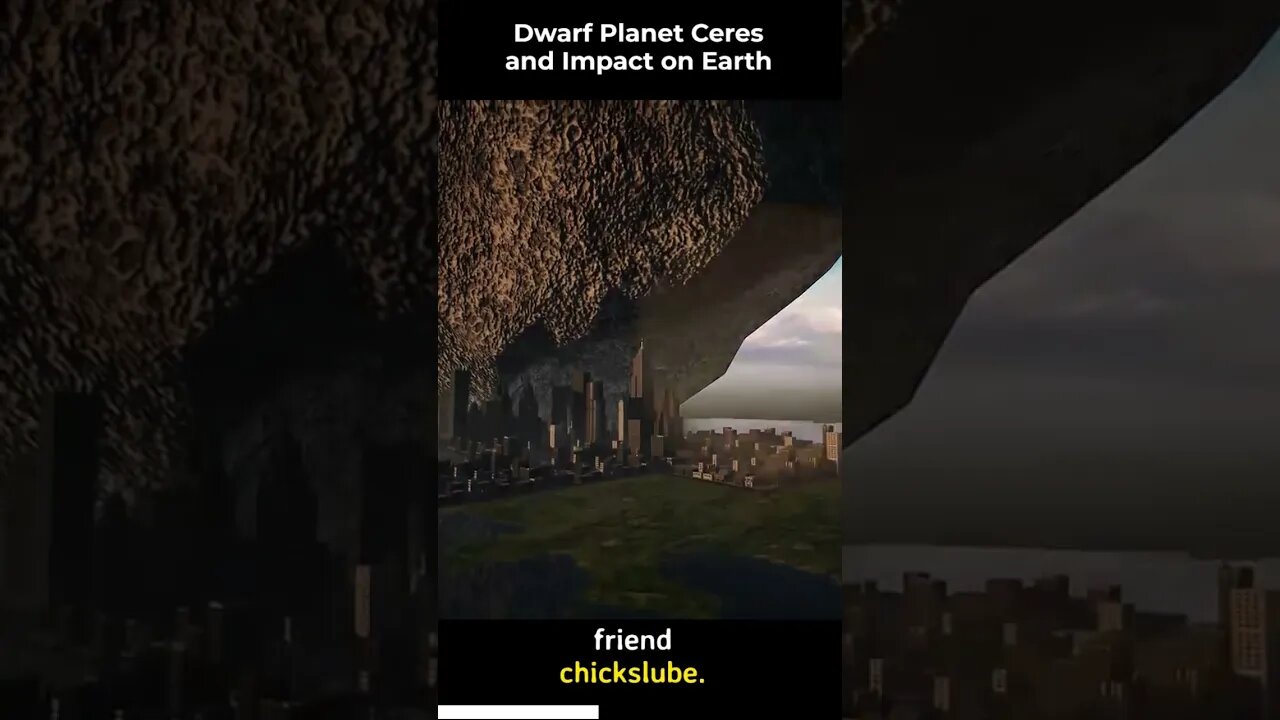Premium Only Content

🌍☄️WARNING! Can We Survive If Biggest Asteroid Ceres Hit Earth ? #shortvideo #nasa #asteroid
Imagine a scenario where the massive asteroids from the dwarf planet Ceres collide with our planet. In this gripping video, we explore the potential consequences of such a catastrophic event. Join us as we delve into the science behind Ceres asteroids and their impact on Earth's atmosphere, climate, and life as we know it. Discover the chilling aftermath, including devastating tsunamis, widespread destruction, and long-lasting global consequences. Could humanity survive such a cataclysmic event? Tune in to find out as we unravel the mysteries of what would happen if Ceres asteroids hit Earth.
If a Ceres-sized asteroid were to collide with Earth, it would have catastrophic consequences. Ceres is the largest object in the asteroid belt between Mars and Jupiter, with a diameter of about 940 kilometers (590 miles). The impact of such a massive object would release an enormous amount of energy and cause widespread devastation.
The effects of the impact would depend on various factors, such as the angle of entry, the velocity of the asteroid, and the location of impact. However, we can generally expect the following consequences:
Massive Explosion: The impact would result in a tremendous explosion, equivalent to multiple nuclear bombs detonating simultaneously. The release of energy would cause a massive shockwave and blast wave, resulting in widespread destruction near the impact site.
Global Fires: The intense heat generated by the impact would ignite fires over a vast area. These fires would spread rapidly and contribute to the destruction of vegetation, infrastructure, and inhabited areas.
Mega Tsunamis: If the asteroid strikes an ocean, it would trigger enormous tsunamis. These massive waves could reach coastal regions and cause further devastation, flooding low-lying areas and impacting coastal cities.
Dust and Debris: The impact would eject an enormous amount of dust and debris into the atmosphere. This would lead to a significant darkening of the skies, reducing sunlight and causing a temporary global cooling effect.
Climate Effects: The injection of dust and debris into the atmosphere would also have long-term climate effects. The suspended particles would scatter sunlight and contribute to a decrease in global temperatures. This could result in altered weather patterns, affecting agriculture and ecosystems worldwide.
Extinction-Level Event: Depending on the scale of the impact, there is a possibility of a mass extinction event, similar to the one that wiped out the dinosaurs. The immediate destruction, followed by long-term climate disruption, would have severe consequences for many species, including humans.
It's important to note that the likelihood of a Ceres-sized asteroid colliding with Earth is extremely low. Astronomers continuously monitor near-Earth objects and have detection systems in place to identify potential threats well in advance. If such an event were predicted, scientists and space agencies would work together to develop strategies for mitigating the impact or altering the asteroid's trajectory to avoid a collision.
#ceres
#asteroid
-
 1:01:34
1:01:34
Timcast
3 hours agoCatholics Targeted By TRANS Shooter, Left Blames CHRISTIANITY
129K89 -
 2:09:57
2:09:57
Steven Crowder
5 hours agoTotal Failure: Unpacking The Media's Evil Reaction to the Minneapolis Church Shooting
284K268 -
 2:05:26
2:05:26
Side Scrollers Podcast
3 hours ago4Chan SUES UK Government + Craig Has Mental Illness Fatigue + Knight Rider REBOOT | Side Scrollers
6.42K1 -
 1:17:10
1:17:10
Sean Unpaved
2 hours agoColt Knost Unplugged: Golf, 2025 Ryder Cup, & Football Fever
12.3K -
 18:12
18:12
Neil McCoy-Ward
2 hours agoIt’s About To Get Ugly Between JD Vance and Macron
4.94K2 -
 LIVE
LIVE
Total Horse Channel
19 hours ago2025 Gypsy Congress Championship Show | Thursday
312 watching -
 LIVE
LIVE
TheAlecLaceShow
2 hours agoJacob Frey MOCKS Catholics | Annunciation | Guests: Gordon Chang, Jim Pfaff | The Alec Lace Show
61 watching -
 LIVE
LIVE
Viss
3 hours ago🔴LIVE - Stacking Wins is What We Do! - PUBG Tactics 101
99 watching -
 LIVE
LIVE
Law&Crime
5 hours ago $1.63 earnedLIVE: Adelson Matriarch Murder Trial — FL v. Donna Adelson — Day 5
346 watching -
 1:42:16
1:42:16
The Mel K Show
2 hours agoMORNINGS WITH MEL K - Refusing the Lie & Standing Firmly for Truth 8-28-25
16.1K17